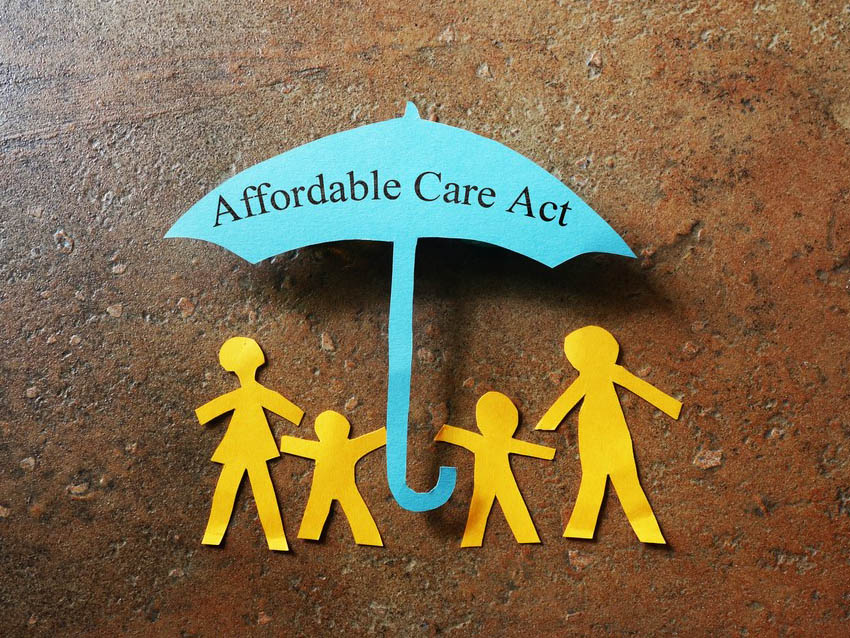Pay or Play Affordability
Nov 28, 2022

 Brought to you by:
Brought to you by: Custom Benefit Consultants, Inc.
Pay or Play Affordability Percentage Decreased for 2023
On Aug. 1, 2022, the IRS issued Revenue Procedure (Rev. Proc.) 2022-34 to index the contribution percentages in 2023 for determining the affordability of an employer’s plan under the Affordable Care Act (ACA).
For plan years beginning in 2023, employer-sponsored coverage will be considered affordable if the employee’s required contribution for self-only coverage does not exceed:
- 9.12% of the employee’s household income for the year for purposes of both the pay or play rules and premium tax credit eligibility. This is the most substantial decrease in this percentage since these rules were implemented (down from 9.61% in 2022). It is the lowest that this percentage has ever been set, at 0.38% below the statutory affordability percentage of 9.5%.
- 8.17% of the employee’s household income for the year for purposes of an individual mandate exemption (adjusted under separate guidance). This is a slight increase from 2022, which was set at 8.09%. Although this penalty was reduced to zero in 2019, some individuals may need to claim an exemption for other purposes.
Important Dates
Aug. 30, 2021
IRS Rev. Proc. 22-34 substantially decreased the ACA’s affordability contribution percentage for 2023 for purposes of the pay or play rules and premium tax credit.
Jan. 1, 2023
The updated percentages are effective for plan years beginning Jan. 1, 2023.
Important Dates
The updated affordability percentages are effective for taxable years and plan years beginning Jan. 1, 2023. The The updated affordability percentage for the pay or play rules and premium tax credit is the most significant decrease since these rules were implemented. As a result, many employers may have to substantially lower their employee contributions for 2023 to meet the adjusted percentage. The affordability percentage for the individual mandate exemption increased slightly from 2022.

Overview of the Affordability Requirement
Under the ACA, the affordability of an employer’s plan may be assessed in the following three contexts:
- The employer shared responsibility penalty for applicable large employers (ALEs) (also known as the pay or play rules or employer mandate);
- An exemption from the individual mandate tax penalty for individuals who fail to obtain health coverage; and
- The premium tax credit for low-income individuals to purchase health coverage through an Exchange.
Although all of these provisions involve an affordability determination, the test for determining a plan’s affordability varies for each provision.
The IRS previously adjusted the affordability contribution percentage for 2015 in Rev. Proc. 14-37; for 2016 in Rev. Proc. 14-62; for 2017 in Rev. Proc. 16-24; for 2018 in Rev. Proc. 17-36; for 2019 in Rev. Proc. 18-34; for 2020 in Rev. Proc. 19-29; for 2021 in Rev. Proc. 20-36; and for 2022 in Rev. Proc. 21-36. The adjusted affordability contribution percentage for purposes of the individual mandate exemption is announced separately in the Notice of Benefit and Payment Parameters final rule for each year.
Affordability Adjustments
This chart illustrates the adjusted affordability percentages for each purpose since 2014. Each provision is described in more detail following the chart
| Affordability Percentage | ||||||||||
|---|---|---|---|---|---|---|---|---|---|---|
| Purpose | 2014 | 2015 | 2016 | 2017 | 2018 | 2019 | 2020 | 2021 | 2022 | 2023 |
| Employer Shared Responsibility Rules | 9.5% | 9.56% | 9.66% | 9.69% | 9.56% | 9.86% | 9.78% | 9.83% | 9.61% | 9.61% |
| Individual Mandate Exemption | 8% | 8.05% | 8.13% | 8.16% | 8.05% | 8.3% | 8.24% | 8.27% | 8.09% | 8.17% |
| Premium Tax Credit Availability | 9.5% | 9.56% | 9.66% | 9.69% | 9.56% | 9.86% | 9.78% | 9.83% | 9.71% | 9.12% |
Employer Shared Responsibility Rules
Under the ACA, employees (and their family members) who are eligible for coverage under an affordable employer-sponsored plan are generally not eligible for the premium tax credit. This is significant because the ACA's employer share responsibility penalty for ALEs is triggered when a full-time employee receives a premium tax credit for coverage under an Exchanged.
To determine an employee's eligibility for a tax credit, the ACA provides that employer-sponsored coverage is considered affordable if the employee's required contribution for self-only coverage does not exceed 9.5% of the employee's household income for the tax year. After 2014, this required contribution percentage is adjusted annually to reflect the excess of the rate of premium growth.
The ACA’s employer shared responsibility or pay or play rules require ALEs to offer affordable, minimum value health coverage to their full-time employees (and dependents) or pay a penalty. The affordability of health coverage is a key point in determining whether an ALE will be subject to a penalty.
These rules generally determine the affordability of employer-sponsored coverage by reference to the rules for determining premium tax credit eligibility. Therefore, for 2014, employer-sponsored coverage was considered affordable under the employer shared responsibility rules if the employee’s required contribution for self-only coverage did not exceed 9.5% of the employee’s household income for the tax year. This affordability percentage was adjusted to:
- 9.56% for 2015 plan years;
- 9.66% for 2016 plan years;
- 9.69% for 2017 plan years;
- 9.56% for 2018 plan years;
- 9.86% for 2019 plan years;
- 9.78% for 2020 plan years;
- 9.83% for 2021 plan years; and
- 9.61% for 2022 plan years.
For 2023, Rev. Proc. 22-34 significantly decreases the affordability contribution percentage to 9.12%. This means that employer-sponsored coverage for the 2023 plan year will be considered affordable under the employer shared responsibility rules if the employee’s required contribution for self-only coverage does not exceed 9.12% of the employee’s household income for the tax year.
Employers may use an affordability safe harbor to measure the affordability of their coverage. The three safe harbors that measure affordability are based on Form W-2 wages from that employer, the employee’s rate of pay or the federal poverty line (FPL) for a single individual. IRS Notice 2015-87 confirmed that ALEs using an affordability safe harbor may rely on the adjusted affordability contribution percentages for 2015 and future years.
The affordability test applies only to the portion of the annual premiums for self-only coverage and does not include any additional cost for family coverage. Also, if an employer offers multiple health coverage options, the affordability test applies to the lowest-cost option that also satisfies the minimum value requirement.
Individual Mandate Exemption
The ACA’s individual mandate requires most individuals to obtain acceptable health coverage for themselves and their family members or pay a penalty. However, individuals who lack access to affordable minimum essential coverage are exempt from the individual mandate. For purposes of this exemption:
- Coverage is affordable for an employee if the required contribution for the lowest-cost, self-only coverage does not exceed 8% of household income (as adjusted).
- Coverage is affordable for family members if the required contribution for the lowest-cost family coverage does not exceed 8% of household income (as adjusted).
This affordability contribution percentage was adjusted to 8.05% for plan years beginning in 2015; 8.13% for plan years beginning in 2016; 8.16% for plan years beginning in 2017; 8.05% for plan years beginning in 2018; 8.3% for plan years beginning in 2019; 8.24% for plan years beginning in 2020; 8.27% for plan years beginning in 2021; and 8.09% for plan years beginning in 2022.
The 2023 Notice of Benefit and Payment Parameters final rule slightly increases the required contribution percentage in 2023. For 2023, an individual qualifies for this affordability exemption if he or she must pay more than 8.17% of his or her household income for minimum essential coverage.
The tax reform bill, called the Tax Cuts and Jobs Act, reduced the ACA’s individual mandate penalty to zero, effective beginning in 2019. As a result, individuals are no longer penalized for failing to obtain acceptable health insurance coverage. However, the 2019 Notice of Benefit and Payment Parameters final rule notes that individuals may still need to seek this exemption for 2019 and future years (for example, in order to be eligible for catastrophic coverage).
Premium Tax Credit
The ACA provides premium tax credits to help low-income individuals and families afford health insurance purchased through an Exchange. The amount of a taxpayer’s premium tax credit is determined based on the amount the individual should be able to pay for premiums (expected contribution). The expected contribution is calculated as a percentage of the taxpayer’s household income, based on the FPL. This percentage increases as the taxpayer’s household income increases and is indexed each year after 2014, as follows:
| Affordability Percentage | |||||||||
|---|---|---|---|---|---|---|---|---|---|
| Income Level | 2014 | 2015 | 2016 | 2017 | 2018 | 2019 | 2020 | 2021-2022 | 2023 |
| Up to 133% FPL | 2% | 2.01% | 2.03% | 2.01% | 2.01% | 2.08% | 2.06% | 0% | 1.92% |
| 133-150% FPL | 3-4% | 3.02-4.02% | 3.05-4.07% | 3.06-4.08% | 3.02-4.03% | 3.11-4.15% | 3.09-4.12% | 0-2% | 2.88-3.84% |
| 150-200% FPL | 4-6.3% | 4.02-6.34% | 4.07-6.41% | 4.08-6.43% | 4.03-6.34% | 4.15-6.54% | 4.12-6.49% | 2-4% | 3.84-6.05% |
| 200-250% FPL | 6.3-8.05% | 6.34-8.10% | 6.41-8.18% | 6.43-8.21% | 6.34-8.10% | 6.54-8.36% | 6.49-8.29% | 4-6% | 6.05-7.73% |
| 250-300% FPL | 8.05-9.5% | 8.10-9.56% | 8.18-9.66% | 8.21-9.69% | 8.10-9.56% | 8.36-9.86% | 8.29-9.78% | 6-8.5% | 7.73-9.12% |
| 300-400% | 9.5% | 9.56% | 9.66% | 9.69% | 9.56% | 9.86% | 9.78% | 8.5% | 9.12% |
*The American Rescue Plan Act temporarily lowered the applicable percentages in this table for 2021 and 2022 only. This Compliance Bulletin is not intended to be exhaustive nor should any discussion or opinions be construed as legal advice. Readers should contact legal counsel for legal advice. ©2022 Zywave, Inc. All rights reserved.
This Benefits Insights is not intended to be exhaustive nor should any discussion or opinions be construed as professional advice.
Blog Tags:
Affordability, ACA, Affordable Care Act, Employer-Sponsored Coverage




